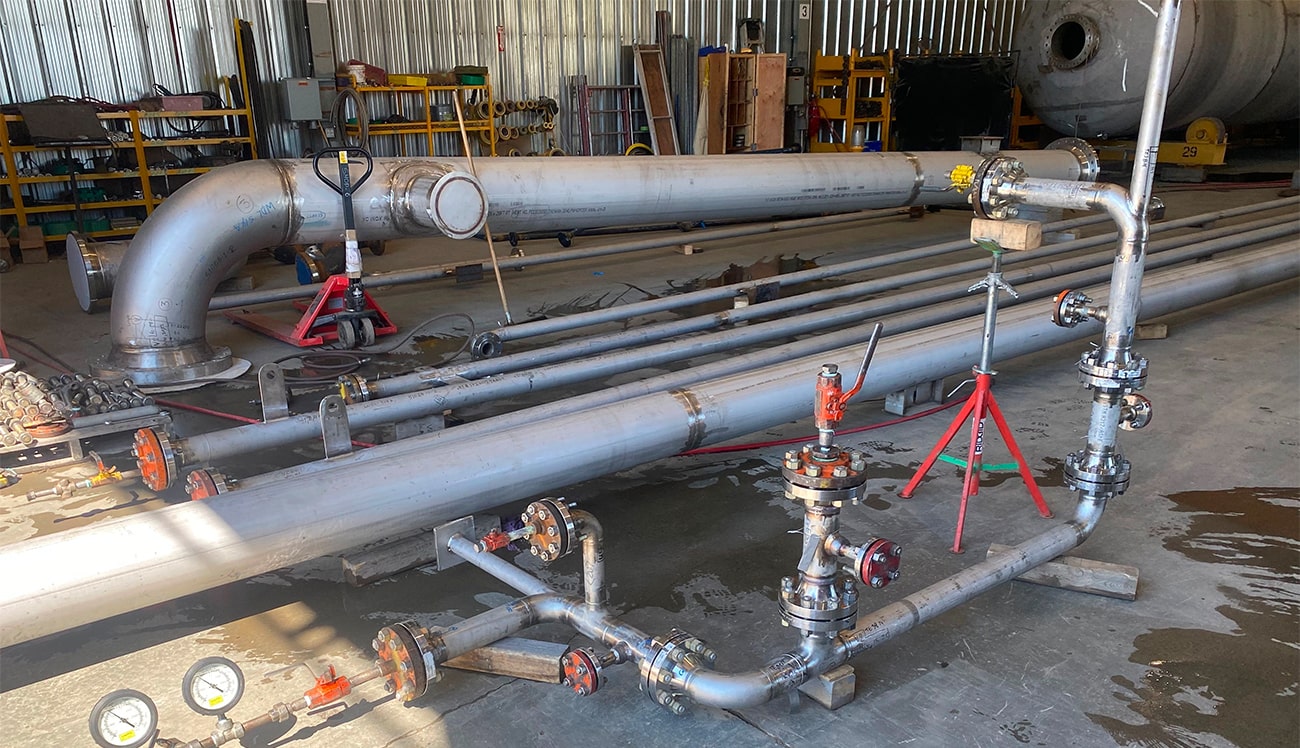Shield Your Investment: Thorough Pipeline Welding Inspection for Assurance
Shield Your Investment: Thorough Pipeline Welding Inspection for Assurance
Blog Article
Comprehensive Summary of Pipe Welding Examination Treatments
Pipeline welding inspection procedures play a crucial role in assuring that welded links meet stringent industry criteria and requirements. From meticulous pre-welding examinations to thorough post-weld assessments, a distinct examination procedure is important for maintaining the structural sturdiness of pipelines.
Pre-welding Assessment Preparations
Prior to starting the welding procedure, extensive pre-welding evaluation prep work are necessary to make certain the stability and top quality of the weld joint. These prep work entail a careful evaluation of the products to be bonded, the welding devices, and the job setting. The materials need to be checked for any type of defects, contaminants, or incongruities that could endanger the weld. This includes monitoring for correct material qualities, dimensions, and surface problems. Pipeline Welding Inspection. Additionally, the welding equipment requires to be evaluated to validate that it is in good working problem, calibrated correctly, and ideal for the particular welding procedure. Any type of issues with the equipment need to be resolved promptly to stop problems in the weld. The work environment must be examined for sanitation, proper ventilation, and safety measures to make sure a helpful setup for the welding procedure. By conducting thorough pre-welding inspection preparations, potential problems can be identified and fixed at an early stage, leading to high-quality and trusted weld joints.
Welding Treatment Qualification
Comprehensive pre-welding assessment preparations lay the structure for the important process of Welding Treatment Credentials, ensuring the stability and high quality of the weld joint. Welding Procedure Certification (WPQ) is an important action in the welding procedure that entails testing and certifying welding treatments to assure they meet details criteria and requirements. The WPQ process commonly includes welding procedure requirements advancement, welding treatment credentials testing, and documents of the outcomes.
Throughout welding procedure specification development, vital details such as the welding process, welding materials, joint layout, and welding specifications are defined to develop a detailed procedure. Subsequently, welding procedure qualification testing is carried out to verify the suggested treatment's integrity. This testing typically includes welding examination coupons that are subjected to numerous mechanical and non-destructive examinations to evaluate the weld's top quality and adherence to the specified standards.
In-process Weld Assessment
During the welding process, in-process weld examination plays a vital role in ensuring the top quality and stability of the weld joint - Pipeline Welding Inspection. This sort of examination entails keeping track of the welding criteria, evaluating the weld bead development, and identifying any kind of possible defects or stoppages as they happen. By performing in-process weld evaluations, welding drivers can promptly resolve any issues that may develop, thereby guaranteeing and avoiding more flaws that the last weld meets the needed requirements
Common approaches utilized for in-process weld examination consist of visual evaluation, fluid penetrant screening, magnetic bit testing, ultrasonic screening, and radiographic testing. Generally, in-process weld evaluation is vital for keeping the quality and reliability of welded pipes.
Non-destructive Testing (NDT)
Non-destructive Screening (NDT) is a critical method used in pipeline welding assessment to assess the integrity of weld joints without causing damages to the bonded framework. By using numerous NDT techniques, inspectors can evaluate the quality of welds and identify any problems or stoppages that may endanger the structural strength of the pipe. Usual NDT approaches utilized in pipe welding examination include Radiographic click to read Screening (RT), Ultrasonic Screening (UT), Magnetic Fragment Testing (MPT), Fluid Penetrant Screening (LPT), and Visual Screening (VT)
RT entails the use of X-rays or gamma rays to produce pictures of the internal structure of the weld, permitting examiners to detect problems such as porosity, fractures, or incomplete combination. In addition, VT includes aesthetic inspection of welds to recognize any type of visible imperfections.
Post-weld Inspection and Documents

Documents of post-weld examination searchings for is essential for keeping high quality control documents and making sure conformity with sector criteria and guidelines. Detailed reports must consist of info about the assessment techniques made use of, the place and nature of any defects located, and any type of rehabilitative actions taken - Pipeline Welding Inspection. Appropriate documentation not just serves as a document of the weld's high quality yet also help in future upkeep and evaluation procedures
Final Thought

Finally, pipeline welding inspection procedures play an important role in making sure the high quality and stability of welds. From pre-welding examinations to post-weld documents, each step is vital in preserving the security and effectiveness of pipes. By following well-known treatments and performing thorough inspections, prospective problems can be identified and addressed before they cause pricey fixings or failures. In general, adherence to correct evaluation methods is vital to the success of pipeline welding jobs.
From careful pre-welding evaluations to comprehensive post-weld evaluations, a well-defined inspection procedure is necessary for maintaining the structural websites strength of pipes. By conducting in-process weld inspections, welding operators can without delay address any kind of problems that might occur, thereby making certain and protecting against more problems that the last weld meets the required specs.
Common techniques made use of for in-process weld evaluation include visual evaluation, liquid penetrant screening, magnetic fragment testing, ultrasonic screening, and radiographic pop over to these guys screening.Non-destructive Testing (NDT) is an important technique utilized in pipe welding inspection to assess the stability of weld joints without causing damage to the bonded framework. Post-weld examination involves different methods to evaluate the welds for issues, consisting of aesthetic inspection, dye penetrant testing, magnetic bit screening, ultrasonic testing, and radiographic screening.
Report this page